There are three primary layers in a natural landscape: the ground cover, or matrix; plants with seasonal interest (spring bulbs, summer showstoppers, fall finales); and architectural specimens (a shrub, tree or tall perennial). Each plays an important role aesthetically and ecologically. When we emulate nature by using these layers in our gardens, we not only benefit local wildlife, but we create a more interesting garden that requires less maintenance.
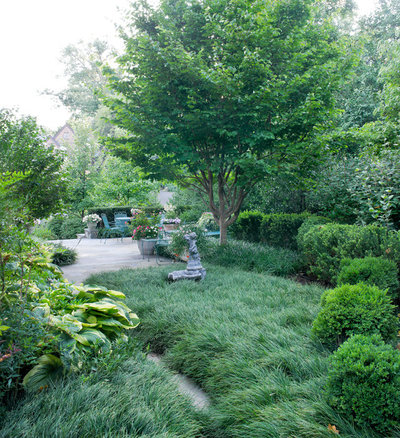
Scott Brinitzer Design Associates
I always include as many native plants as I can when designing in layers — especially plants that are found together in wild communities. These plants will, hopefully, work together more easily, mutually supporting one another above and below the soil line and maintaining a healthy equilibrium. This also feeds wildlife.
Ground layer. Roughly half of your design might be low bunch grasses, sedges, a creeping vine or some other ground cover that’s no more than a foot or two tall. This forms the main layer of your living green mulch and, over time, will reduce if not eradicate the need for outside mulch applications. These low plants will slowly spread, self-sowing and, ideally, reducing your garden’s maintenance.
This layer does not have to evenly cover the entire bed or border, but it can be a big help if it does. In the gaps between the ground-layer plants, we can grow masses or drifts of flowering plants that give us the seasonal ornamental pop — and pollinator food — we expect in any garden.
The Art of Green Mulch
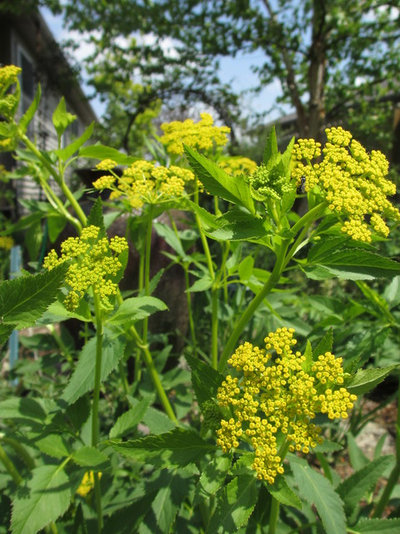
Benjamin Vogt / Monarch Gardens
Ornamental and seasonal interest. It’s important to have a succession of blooms, not just because it’s pretty but also because it’s beneficial for creatures like butterflies and bees. In the spring you might have a few blue wild indigos (
Baptisia australis) or golden Alexanders (
Zizia aurea) in bloom, or perhaps some pasque flowers (
Pulsatilla patens). These plants don’t lose architectural interest as they fade — in fact they have stunning seed heads — but they do need other plants to fill the flower void. Follow with a succession of grouped summer-flowering perennials, such as coneflowers (
Echinacea spp.), rattlesnake master (
Eryngium yuccifolium), purple prairie clover (
Dalea purpurea) or butterfly milkweed (
Asclepias tuberosa).
Consider whether you want the plants to be a similar height to your ground layer or if you want them stand above the ground plane, with their height adding another dimension to the garden’s structure. If your ground layer is 1 foot tall, you might want the seasonal ornamental layer to be 2 or 3 feet tall, for example. The mixed heights add interest and also create more diverse habitat for wildlife.
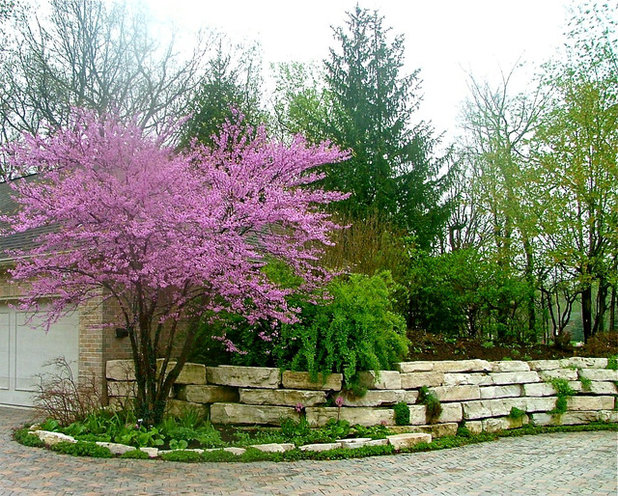
The American Gardener, LLC
Architectural specimens. A shrub or clump of shrubs planted in the middle or off to the side could benefit your layered garden. Consider architectural shrubs like redtwig dogwood (
Cornus sericea), southern arrowwood (
Viburnum dentatum), chokeberry (
Aronia spp.) or ninebark (
Physocarpus spp.).
Depending on the size of your garden, you could also incorporate trees into your layered design. Small trees like ‘Canada Red’ chokecherry (Prunus virginiana ‘Canada Red’), serviceberry (
Amelanchier spp.), crabapple (
Malus spp.) or redbud (
Cercis spp.) would suit this design — or maybe a weeping evergreen.
You might even want towering perennials, such as tall tickseed (
Coreopsis tripteris), ironweed (
Vernonia fasciculata), Joe Pye weed (
Eutrochium purpureum) or American senna (
Senna hebecarpa) — all of which enliven the garden design with their blooms and structure. The sky really is the limit when it comes to your plant selection — it all depends on your site’s conditions and your preferred garden style.
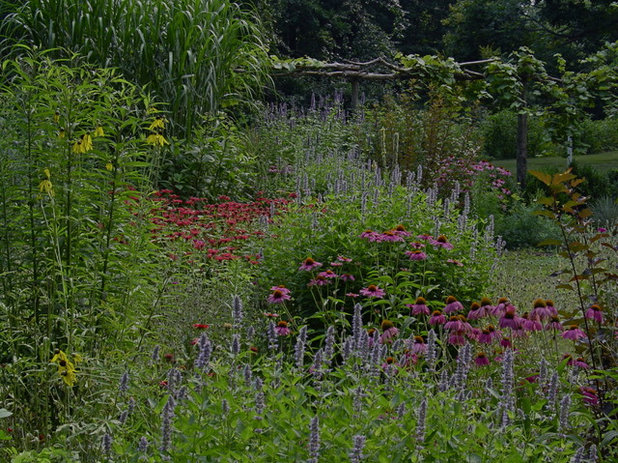
Brian Maloney Design Associates
A note on competition. Some plants — such as swamp milkweed (
Asclepias incarnata) and little bluestem (
Schizachyrium scoparium) — are slow movers or just prefer to remain in clumps. Others — like bee balm (
Monarda spp.) and upright prairie coneflower (
Ratibida columnifera) — like to move, either by root runners or self-sowing. It’s important to plant like next to like in order to have a garden bed that doesn’t go crazy on you. Plant aggressive plants with aggressive plants; let them duke it out and keep each other in check. Let clumping plants and native bunch grasses cozy up to one another and enjoy their mutual separation. This will help the intended design stay intact longer while easing your maintenance load.
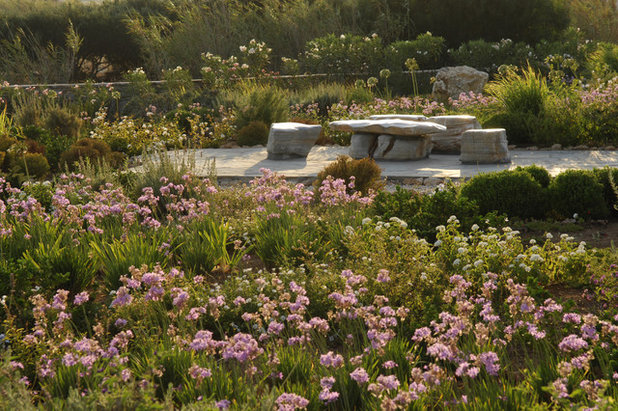
Carolyn Chadwick
With all the ingredients in place, you’ll have created a garden that, in many ways, mimics how nature layers itself. The ground cover shades the soil, conserving soil moisture and competing well against weeds. The ornamental layer lifts blooms up to the sun and pollinators while creating a middle level of architectural and season interest. The taller, thicker specimens, which might include shrubs or trees, provide yet another layer of wildlife habitat while adding visual interest and weight.
The world beyond our homes has much to teach us about how nature works and what wildlife needs to thrive. If we can begin to emulate the complexity of nature, and allow a bit more wildness in our landscapes, we’ll find both wildlife and ourselves happier and healthier.





